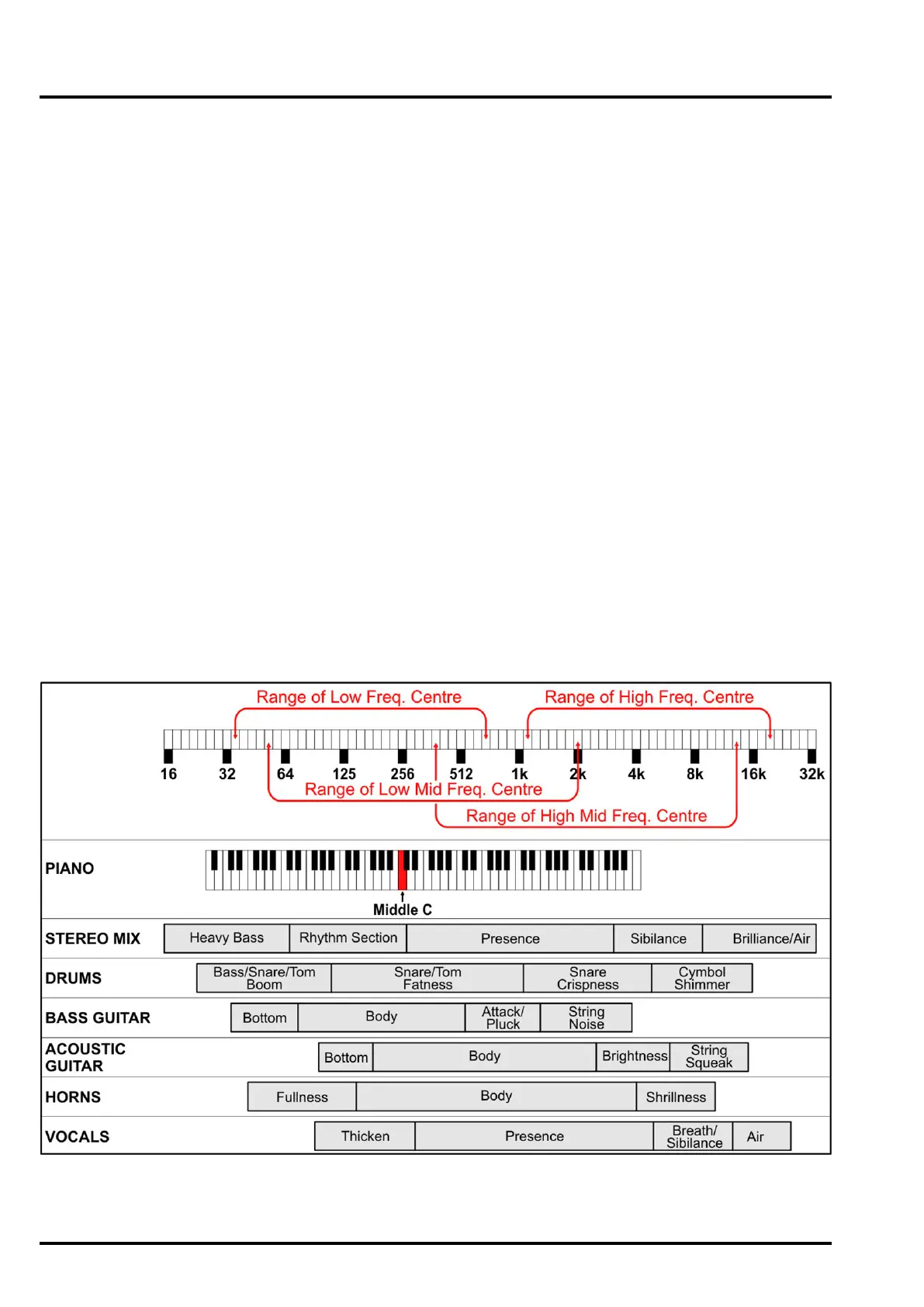Drawmer 1971 handleiding
Handleiding
Je bekijkt pagina 12 van 15

12
DRAWMER 1971 OPERATOR’S MANUAL
Useful Frequencies
Mains hum in the UK and Europe has a fundamental frequency at 50Hz and harmonics at 50Hz intervals stretching up
throughout the audio spectrum. By ltering at 50Hz and 100Hz using the narrowest bandwidth setting, it is often possible to
signicantly reduce the perceived level of hum without unduly aecting the wanted signal. On signals containing no very low
frequencies, the Low Cut lter may also be used. Its frequency should be set by experimentation so that it is tuned as high
as possible without aecting the bass end of the wanted signal.
Kick Drums: Cut any frequencies below 20-30Hz as these will be almost inaudible to most listeners. Rock kick drums often
benet from a slight boost at 80Hz which produces a tight, punchy sound - add the Peak slope for added power. However,
a deeper sound, more suited to dance music production, can be achieved by boosting the bass at 32Hz or 50Hz using a
medium bandwidth setting and simultaneously applying cut at 160Hz to prevent the mid-range from becoming too boxy (or
honky). By applying a Hich Cut lter around 10 kHz – 12 kHz, you can get rid of more noise and cymbal bleed that don’t
belong on a kick drum track.
Electric guitars often need a little EQ to add bite or presence. The High Mid equaliser is ideally suited to this purpose and,
depending on the guitar sound sought, the 1.2kHz, 2kHz or 3kHz setting might be most suitable. The degree of boost should
be set by ear and the starting bandwidth setting should be 1 Octave, though this may also be ne-tuned. Equalisation at the
low end of the spectrum (80 - 125Hz) may also be benecial in controlling the amount of cabinet resonance added to the
sound. Low Cut anything below 80Hz and High Cut above 10kHz will be useful in removing hum and noise from the sound.
Acoustic guitars can sound boxy if miked from too close and a little cut at 100Hz or 160Hz can help to even things out. If the
sound is too ‘at’, try adding a little boost between 5kHz and 8kHz, and to thin out the sound to make it sit nicely in a busy
track, try using the Low Cut lter to shave a bit o the bottom end.
Vocals: dierent vocalists require dierent treatment, but it is worth keeping in mind that the human voice is a familiar sound
to all of us, and we soon notice if it has been over-treated. In general, use a Low Cut at around 100Hz and High Cut at around
10kHz, both with 12dB/Octave slopes, and sweep to nd the perfect settings to remove any unwanted noise and use wide
bandwidth settings with gentle amounts of boost to polish the sound.
The following diagram provides a general idea of some useful frequencies that will aid in setting the eq. They are by no means
denitive and should be used as a guide only:
Bekijk gratis de handleiding van Drawmer 1971, stel vragen en lees de antwoorden op veelvoorkomende problemen, of gebruik onze assistent om sneller informatie in de handleiding te vinden of uitleg te krijgen over specifieke functies.
Productinformatie
| Merk | Drawmer |
| Model | 1971 |
| Categorie | Niet gecategoriseerd |
| Taal | Nederlands |
| Grootte | 5010 MB |


